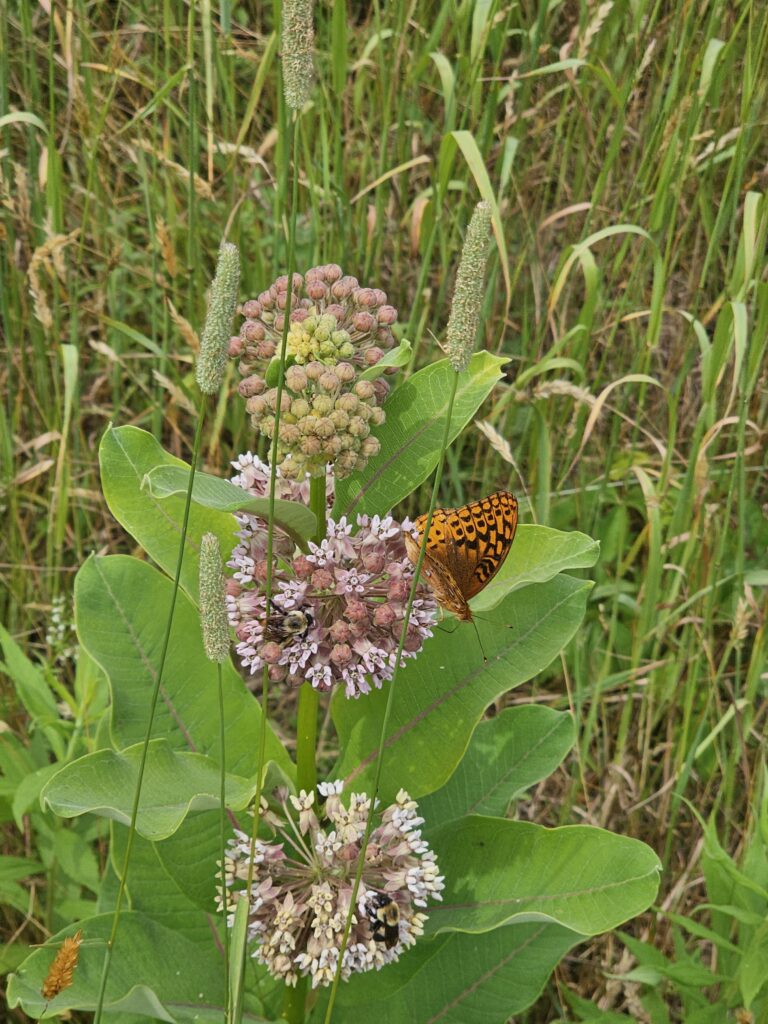Green Hills Farm is a fitting name for the rolling landscape of farm fields and woodlands that make up this 118-acre conservation easement in Lycoming County. The land’s changing topography and variety of habitats support an abundance of wildlife and native species, which were on full display during Sara’s recent site visit.
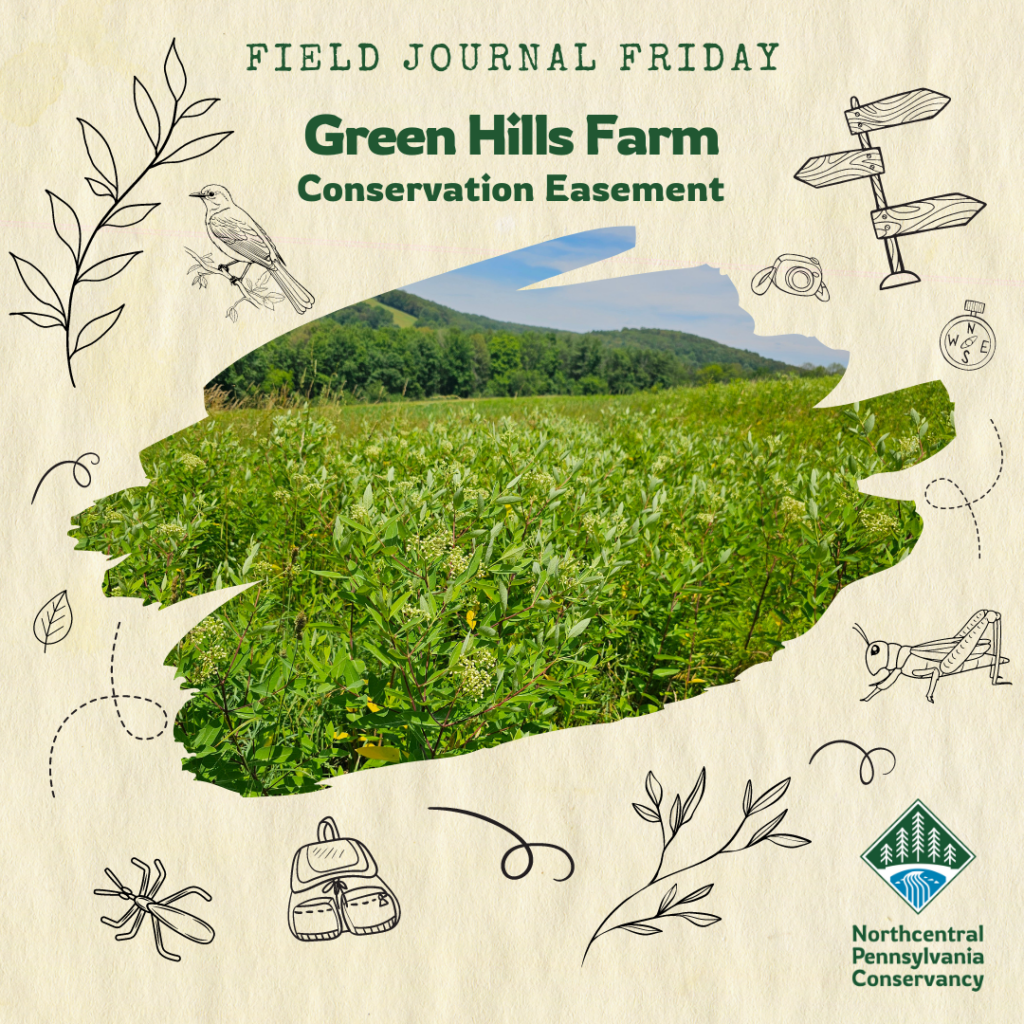
Observation #1: Yarrow
Yarrow (Achillea millefolium) is a hardy, perennial herb commonly found throughout Pennsylvania. Known for its feathery leaves and clusters of small, white or pink flowers, yarrow thrives in a variety of habitats, including meadows, fields, and roadsides. Yarrow attracts a range of pollinators, including bees and butterflies, and its deep roots help prevent soil erosion. Historically, it has been valued for its medicinal properties, used by indigenous peoples and settlers alike for treating wounds and various ailments.
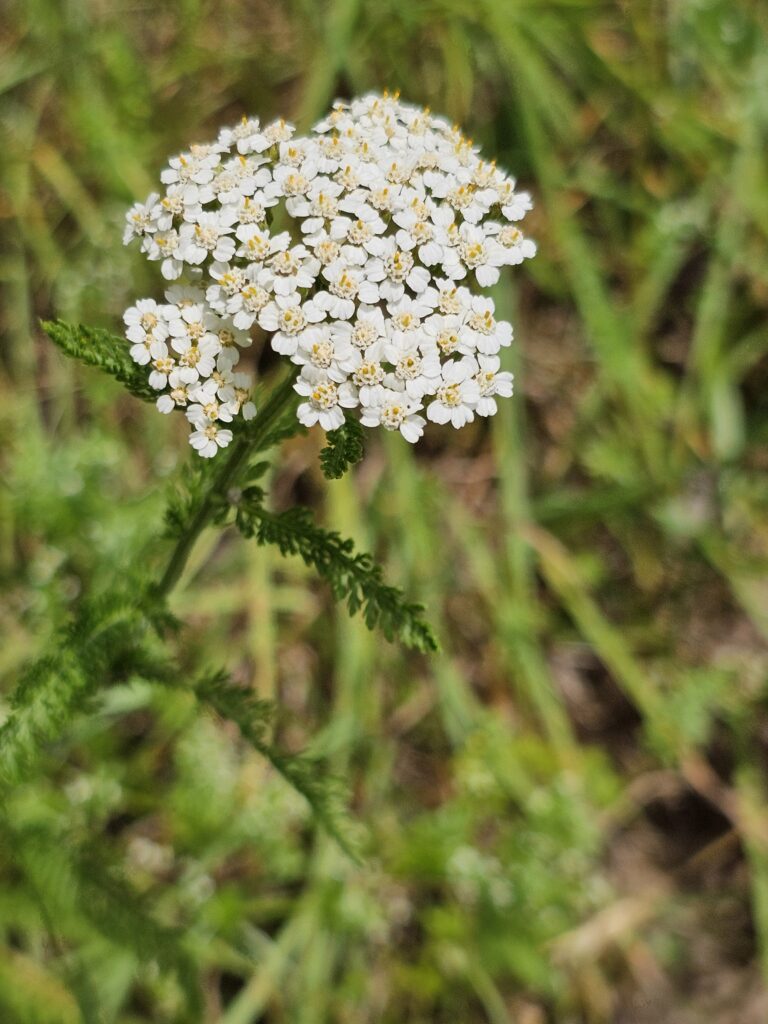
Observation #2: Indian Hemp
Indian Hemp, also known as Common Dogbane (Apocynum cannabinum), is a perennial herb native to Pennsylvania and widespread across North America. This plant typically grows in moist areas such as riverbanks, meadows, and open woods. It can reach heights of 2-5 feet and features slender, red stems, and lance-shaped leaves. In summer, it produces clusters of small, white to greenish flowers.
Indian Hemp is well-known for its fibrous stems, which indigenous peoples historically used to make cordage and twine. However, the plant is also toxic, with milky sap that can cause irritation. It is important for supporting various pollinators, including bees and butterflies.
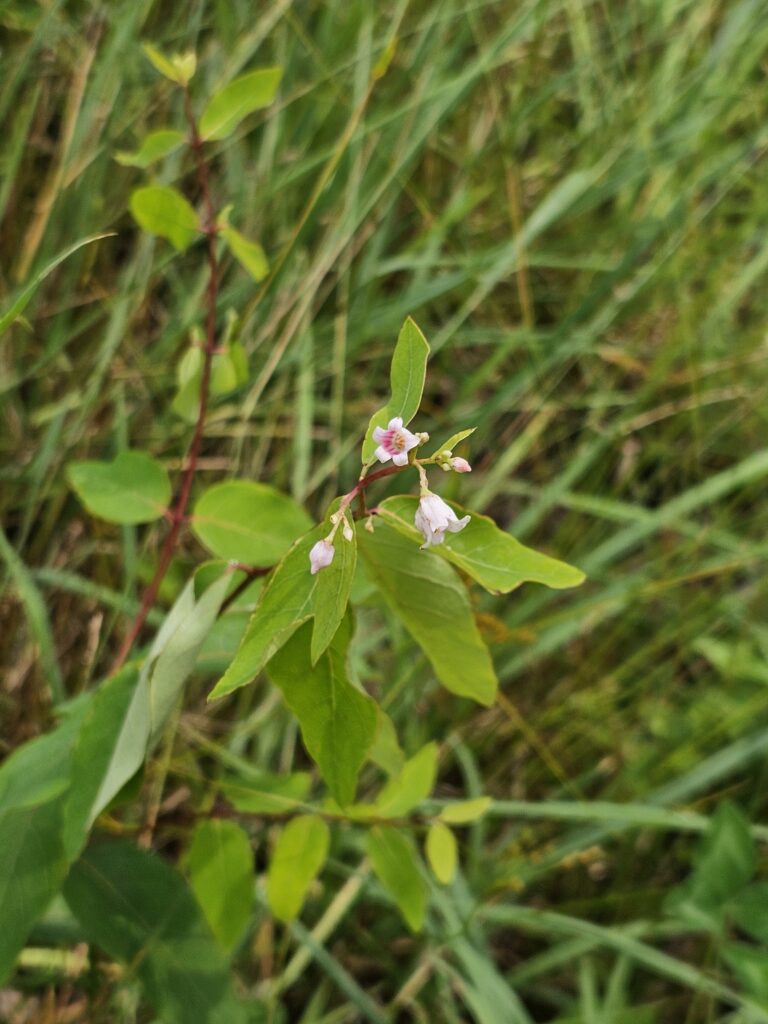
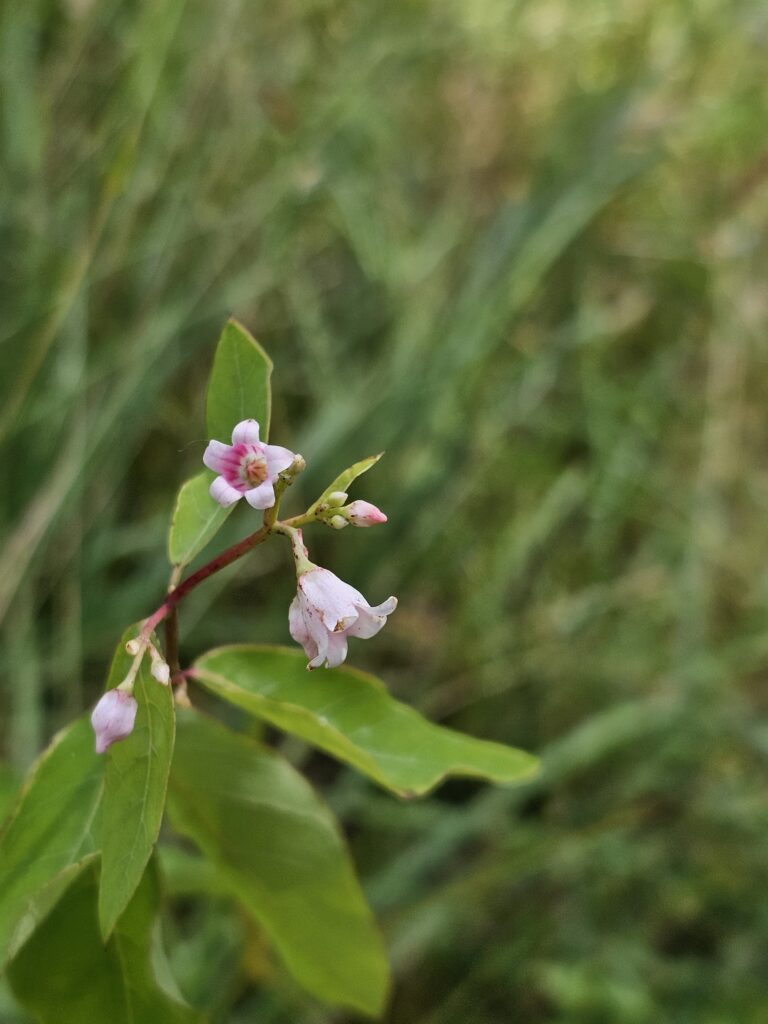
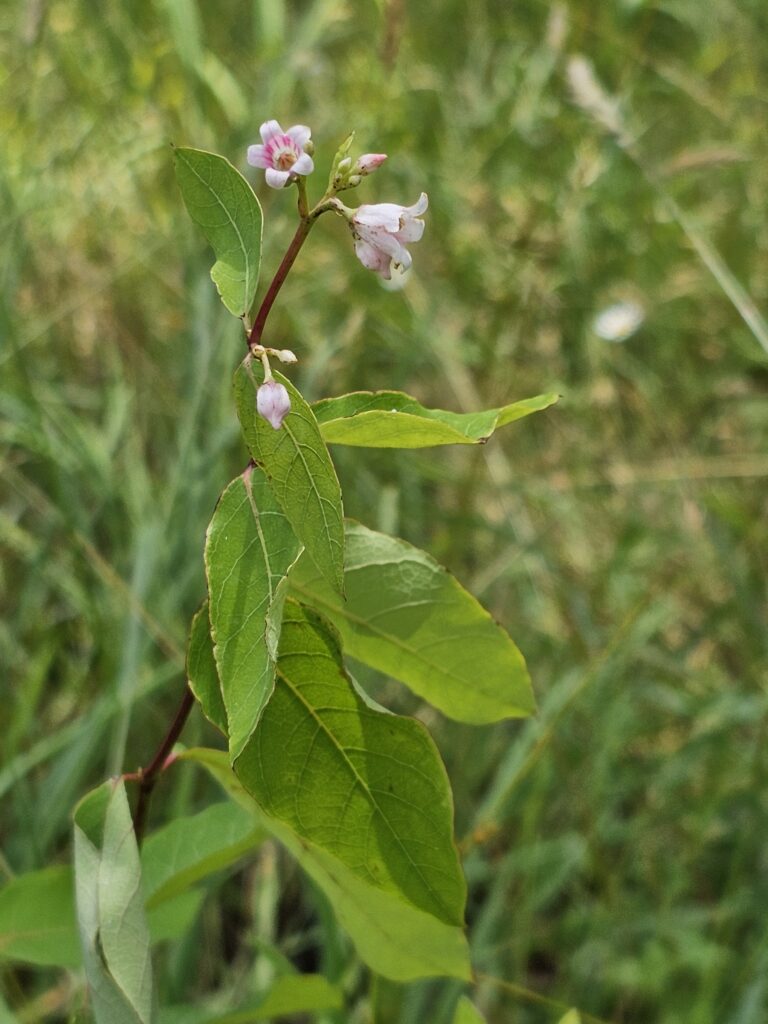
Observation #3: Horsenettle
Horsenettle (Solanum carolinense) is a perennial plant commonly found throughout Pennsylvania. It has sharp spines on its stems and leaves, which help protect it from being eaten by herbivores. This makes it a tough and resilient plant in the wild. Horsenettle’s attractive star-shaped flowers, which bloom in shades of pale purple or white, are a favorite among bees and other pollinators. The fruit of the horsenettle resembles small, yellow tomatoes, but it is highly toxic to humans and livestock.
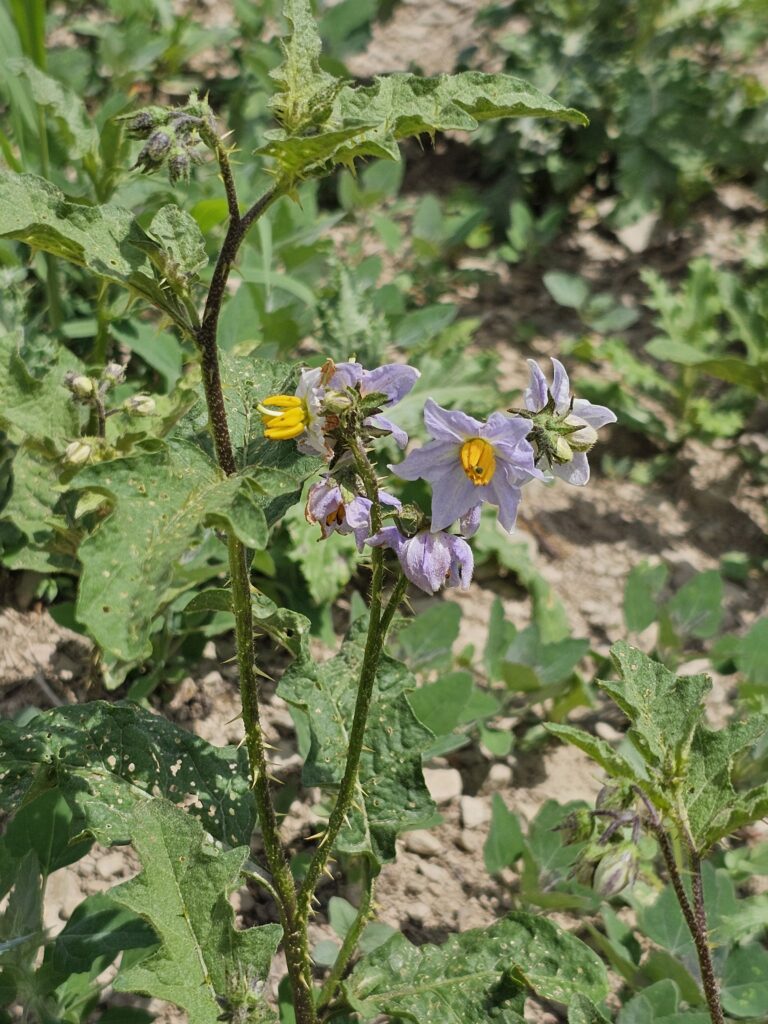
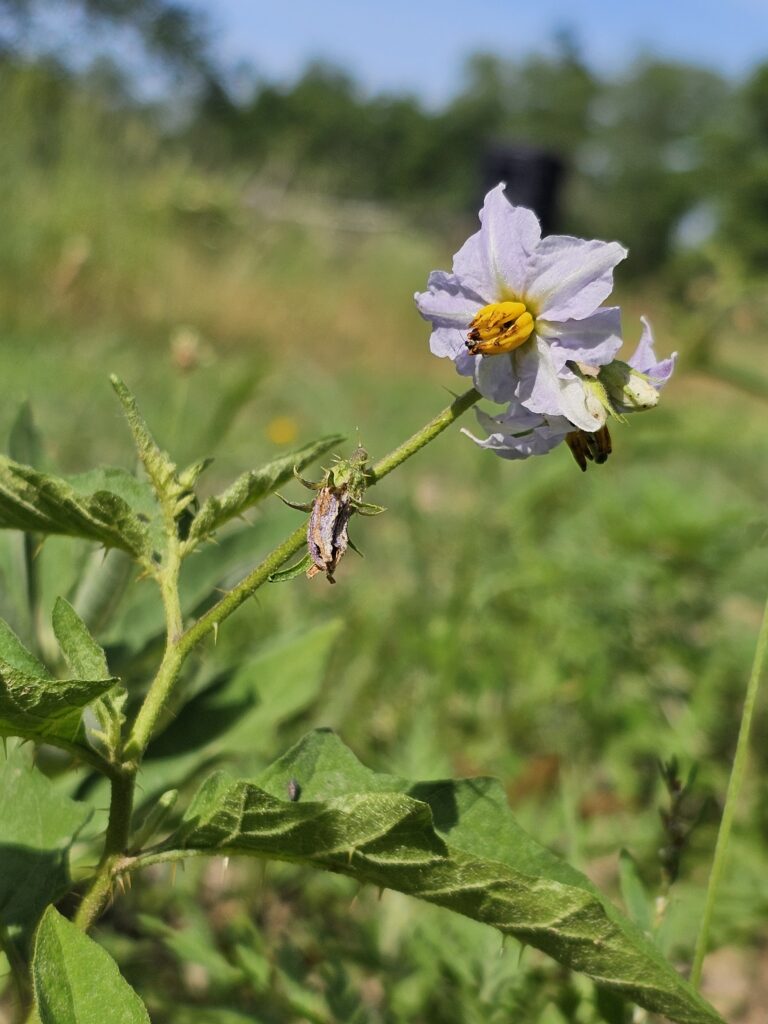
Observation #4: Common Milkweed
Common milkweed (Asclepias syriaca) is a perennial plant native to Pennsylvania and plays a crucial role in supporting pollinators. Common milkweed is famously known as the primary host plant for monarch butterflies (Danaus plexippus). Monarch caterpillars exclusively feed on the leaves of milkweed plants. The toxins present in milkweed sap make monarch caterpillars and butterflies distasteful to predators, providing them with protection.
While monarch caterpillars rely on milkweed leaves, the flowers of common milkweed produce abundant amounts of nectar. This nectar is a valuable food source for many pollinators, including bees, butterflies (like the Great Spangled Fritillary), moths, and hummingbirds.
